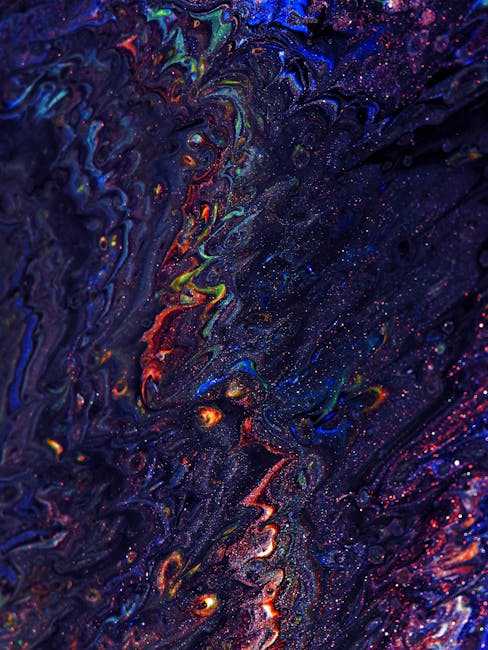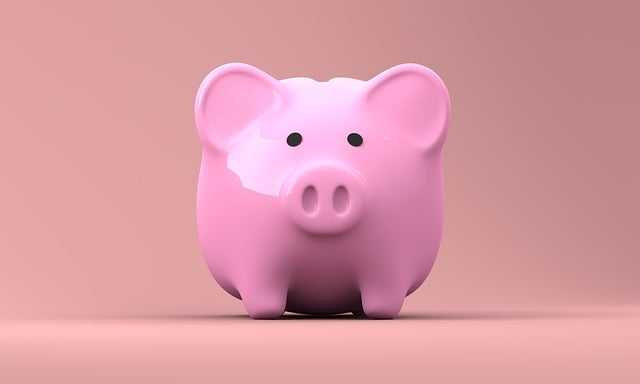Table of Contents
- Exploring the World of Abstract Art and Its Emotional Impact
- Techniques and Styles That Define Abstract Paintings
- Curating Your Space with Abstract Art for Maximum Effect
- Investing in Abstract Artwork: What You Need to Know
- Q&A
- Closing Remarks


Exploring the World of Abstract Art and Its Emotional Impact
Abstract art transcends traditional representation, engaging viewers in a visceral dialogue that stirs emotions and provokes thought. It allows artists to communicate feelings and ideas without the confines of realism, using color, shape, and form as their language. The beauty of this genre lies in its ability to evoke diverse interpretations; what one person sees may differ vastly from another’s perspective. Each piece becomes a personal experience, reflecting the viewer’s own emotions and thoughts, making the artwork a mirror to the psyche.
At the heart of abstract expression lies a spectrum of emotional responses. Bold brush strokes might signify strength or chaos, while gentle curves and soft colors can evoke tranquility and serenity. Artists often infuse their personal histories and the socio-cultural landscape into their creations, resulting in a rich tapestry of meanings. The interplay of elements on canvas can inspire feelings such as joy, sadness, confusion, or even nostalgia. This emotional depth makes abstract art a powerful tool in therapy and emotional exploration.
In understanding how abstract artwork impacts feelings, one can observe a few key aspects:
- Color Psychology: Different colors are scientifically proven to influence mood and perception.
- Texture and Movement: The use of texture can evoke tactile sensations that resonate emotionally.
- Composition: The arrangement of elements creates visual tension, leading to emotional responses.
In the realm of abstract paintings, the lack of defined subject matter invites viewers to engage with their imagination. Some might find solace in chaotic splashes of color, while others may be drawn to minimalistic forms that evoke a sense of calm. The emotional impact of each piece can help foster deeper connections among viewers, creating community through shared experiences and feelings. As we explore this captivating art form, it becomes clear that abstract works encourage not just observation, but a profound connection to our inner selves.


Techniques and Styles That Define Abstract Paintings
Abstract paintings are a captivating realm where emotions, colors, and forms converge to express the inexpressible. Techniques utilized in this genre often stray from traditional representation, focusing instead on the exploration of shapes, textures, and hues. One notable technique is drip painting, popularized by artists like Jackson Pollock. By letting paint fall freely onto the canvas, the artist creates spontaneous patterns and rhythms that imbue the work with energy and movement.
Another influential style in abstract art is geometric abstraction, which relies on precise shapes and forms. Artists such as Piet Mondrian championed this approach, utilizing grids and vibrant primary colors to convey harmony and order. This technique emphasizes the relationship between space and color, inviting viewers to engage with the artwork on a cerebral level. Geometric abstraction challenges perceptions, encouraging a dialogue between the canvas and the observer.
The use of mixed media has also become prevalent in contemporary abstract practices. It involves the incorporation of various materials, like fabric, paper, or found objects, alongside traditional paint. This approach not only adds depth and texture but also invites a layered interpretation of the piece. By merging different mediums, artists can create a multisensory experience, capturing the complexity of human emotion and thought.
Color plays a pivotal role in defining abstract art, acting as a silent language that evokes feelings and memories. Artists often experiment with color theory, using complementary and contrasting palettes to create visual tension or harmony. For instance, a canvas dominated by warm colors may evoke feelings of comfort or passion, while cooler tones can invoke calmness or melancholy. The strategic choice of colors transforms a simple artwork into a profound statement that resonates deeply with viewers.
Curating Your Space with Abstract Art for Maximum Effect
Transforming your space with abstract art can elevate the ambiance of any room, creating a focal point that speaks volumes. Unlike traditional representations, abstract art opens the door to personal interpretation, inviting viewers to connect on a deeper level. When choosing pieces, consider how colors, shapes, and textures can either complement or contrast your existing décor. A vibrant palette can energize a neutral space, while softer hues can bring a sense of calm to a busy environment.
When integrating abstract artwork, aim to create a conversation among the pieces. Pair different sizes and shapes for an eclectic gallery wall, or opt for a large statement piece that draws the eye from across the room. To enhance visual interest, think about the spacing and arrangement. Here are a few tips for curating your collection:
- Mix Media: Combine paintings with mixed media art and sculpture.
- Layer Textures: Incorporate pieces with different textures—such as canvas, wood, and metal.
- Balance Colors: Use complementary colors from your palette to unify the space.
In addition to visual harmony, consider the emotional impact of the artwork. Abstract pieces can evoke specific feelings and set the overall mood of the room. For a cozy and inviting atmosphere, choose works that are warm and inviting. For a more dynamic environment, go for bold contrasts and striking patterns. Below is a table showcasing how different styles impact the ambiance:
| Art Style | Impact on Space |
|---|---|
| Geometric Abstract | Creates a modern, structured feel |
| Color Field | Invokes tranquility and spatial depth |
| Expressionism | Encourages emotional engagement and dynamic energy |
| Fluid Abstract | Conveys motion and organic flow |


Investing in Abstract Artwork: What You Need to Know
Investing in abstract artwork can be both an exciting venture and a wise financial decision. Before diving into the vibrant world of colors and shapes, it’s essential to grasp the nuances of what makes abstract art appealing and valuable. Unraveling the layers of personal expression and emotional depth in these pieces can lead to more informed choices that resonate with both your taste and future investment potential.
When considering a purchase, focus on the artist’s background and their previous works. Investigate their exhibitions, awards, and gallery representation. This research will provide insights into their recognition in the art community, which often correlates with the value of their artwork. Keep in mind that emerging artists may offer lower prices now, but they could appreciate significantly if they gain popularity.
Understanding the medium and technique used in the artwork is another critical factor. Whether it’s acrylics, oils, or mixed media, the choice of materials influences not only the artwork’s aesthetics but also its longevity and maintenance needs. Consider the following materials:
- Acrylics: Fast-drying and versatile, acrylics can be vibrant and glossy.
- Oils: Known for their richness and depth, oil paintings can take years to fully dry.
- Mixed media: These pieces often combine various materials, providing unique textures and effects.
think about how the artwork will fit into your space. Abstract artwork can serve as a stunning focal point, complementing the decor and creating a dialogue within a room. It might be helpful to visualize the piece in your environment, perhaps by using a virtual space planning tool or visualizing the colors and forms alongside your current furniture. Investing in art is not just about financial return; it’s also about enriching your personal space and fostering a connection with the art you choose.
Q&A
Q&A: Understanding Abstract Artwork Paintings
Q: What is abstract artwork? A: Abstract artwork is a style of painting that departs from realistic representation. Instead, it emphasizes shapes, colors, forms, and gestural marks to achieve its effects. This kind of art seeks to evoke emotions and provoke thought, often leaving the interpretation open to the viewer.Q: Who are some notable abstract artists? A: Some prominent figures in the world of abstract art include Wassily Kandinsky, often considered a pioneer of abstract painting, Piet Mondrian, known for his geometric compositions, and Jackson Pollock, famous for his drip painting technique. Contemporary artists like Mark Rothko and Gerhard Richter also explore abstraction in their works.
Q: What are common techniques used in abstract painting? A: Abstract artists employ various techniques, including gestural brushwork, layering, color blocking, and the use of unconventional materials. Techniques like pouring, dripping, and staining are also common, allowing for spontaneity and a unique expression in each piece.
Q: How is abstract art different from traditional art styles? A: Unlike traditional art, which often aims to depict subjects realistically, abstract art focuses more on portraying emotions and ideas through non-representational forms. This shift allows viewers to engage with the artwork on a more personal level, often interpreting it based on their own experiences and emotions.
Q: What emotions do abstract paintings commonly evoke? A: The emotions elicited by abstract artwork can vary greatly. Bright, bold colors might provoke feelings of joy or excitement, while darker palettes can inspire contemplation or melancholy. The abstract nature invites viewers to reflect on their personal feelings and interpretations, making each experience unique.
Q: Can anyone create abstract art? A: Absolutely! Creating abstract art is about self-expression and experimentation, not strict rules. Whether you’re a seasoned artist or a beginner with a canvas and some paint, you can explore your creativity. The process of creating is just as important as the final product in abstract art.
Q: How can I start appreciating abstract artwork? A: Begin by exploring different styles and artists. Visit galleries, browse art books, or explore online platforms. Take your time to observe the colors, shapes, and emotions in each piece. Reflect on your reactions—there’s no right or wrong way to feel about art, and personal interpretation is key.
Q: Is abstract art worth investing in? A: Investing in abstract art can be worthwhile, not only for its aesthetic value but also for its potential to appreciate over time. As with any investment, it’s critical to research artists and trends in the market. Collecting pieces that resonate with you personally can also add sentimental value to your investment.
Q: What role does color play in abstract artwork? A: Color is a fundamental element in abstract artwork, often used to convey mood and emotion. Artists may choose specific palettes to evoke particular feelings or to create contrasts and harmonies. The interplay of colors can significantly enhance the overall impact and meaning of the piece.
Q: How has abstract art evolved over time? A: Abstract art has undergone significant evolution since its emergence in the early 20th century. It has branched into numerous movements, including abstract expressionism, minimalism, and geometric abstraction. Today’s artists continue to push boundaries, incorporating technology and mixed media to expand the definition of abstraction.
Feel free to ask more questions or dive deeper into the colorful world of abstract artwork!
